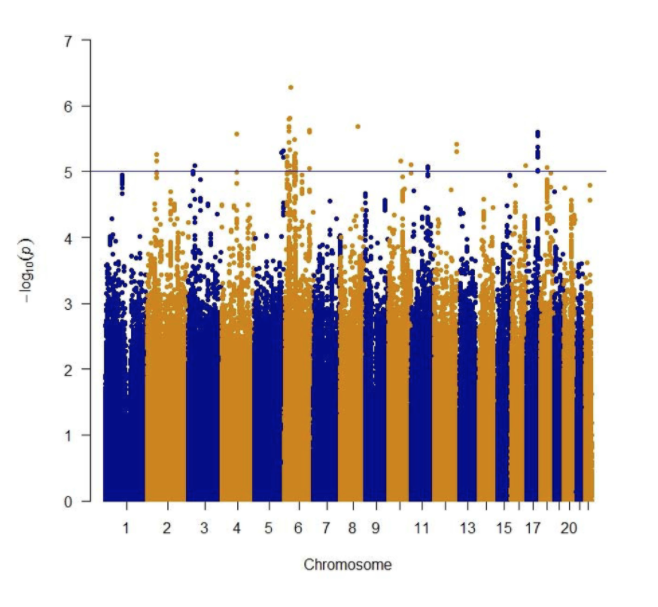Dr. Gil Atzmon from the Albert Einstein College of Medicine discusses his 2017 study published by Aging, entitled, “The complex genetics of gait speed: genome-wide meta-analysis approach.”

Speaker
Welcome to the Aging YouTube channel. This interview is with Dr. Gil Atzmon in the department of medicine and genetics at the Albert Einstein College of Medicine in the Bronx, New York. (He is) also in the department of human biology and a faculty member of the Department of Natural Science at the University of Haifa in Haifa, Israel. (He is) talking about a manuscript published in Volume 9, Issue 1 of Aging titled, “The complex genetics of gait speed, genome-wide meta analysis approach.”
Dr. Gil Atzmon
So the paper that I’m talking about is, “The complex genetic of gait speed: genome-wide meta analysis approach.” And what we did here is to combine 21 studies around the world and try to figure out what is the genetic predisposition for gait speed. The idea was that if we are going by number, then we will find something because the size is a matter of the resolution that you can pinpoint the genetic variant that might have an effect on the phenotype that, in our case, is gait speed. So when you’re talking about challenges, think of do you have 21 people or 21 groups that you need to combine together and figure out how you harmonize the data that they provide you with and try to figure out what’s going on there. This is a challenge because it lasted for almost four years until we had the paper done and published.
But eventually what we found was great. Although what we expected to find once we started this endeavor, we thought we’d have variants that have genomic significance. Meaning, if you have this variant either you have a lower gait speed or you have higher gait speed or normal gait speed. And we’re talking about elderly people. That’s what we tried to figure out. We found out that we didn’t find such a variant, but we find other alternatives.
We try to use protein analysis, group analysis, pathway analysis on all kinds of stuff. And every time that we put the finger on such a different analysis, we found something, some other interesting views. As I said, for genetic variant we didn’t find any, meaning the closest that we have was 10 to the -7 when the threshold was 10 to the -8.

But when you look at these genes, we found that there are a couple of them that have higher prevalence among the top hit. Again, they didn’t reach a significance, but the minute you have such a number in the top hits, you think it might be relevant. We have a HLA-DPB1, we have the POM121-L2, and so forth and so forth. And you can see in the paper to look at those variants.
The interesting idea I’m seeing of the observation was that there was a couple of hits that we saw only once, but they are hits such as the [inaudible 00:03:36] 12I02 with a peak, meaning there is aggregation of a couple of hits around this gene or inside this gene. Again, it tells us that this gene might be relevant to what we are looking for. When we did the pathway analysis we found a couple of them that are associated with diabetes, which if you think about it, that really can cause people to either have slow gait speed or higher gait speed. It depends on the disease that you have. We have a couple of hits in the pathway, and a lot of this link us to cancer. And again, the same thing. If you think about it, the minute you have a disease, your performance, in this case it’s gait speed, is either declined or increased.
So we can see in both cases, though we didn’t find the right hit, still what we found has some biological explanation. It also does expression analysis or expression QTL. QTL means that those genes that are associated with the expression of the genes didn’t code in the phenotype, we found a couple of them that were higher significance. Again, another example of what is the predisposition of those genes to the phenotype that we had.
So, all in all, we concluded that we found some relevant genetic predisposition for this phenotype. And although we didn’t find the exact variant that can say “if you have it, you have low speed, and if you don’t have it, you have a higher speed,” we think that if we’re looking at the story that we crafted, we think that we’ve found some ideas, some biological explanation which is what is inside this paper.
Speaker
Aging was launched in 2009 and is currently a traditional peer reviewed journal with free access which publishes in monthly issues. Topics include high impact research papers of general interest and biological significance in all fields of aging research, as well as topics beyond traditional gerontology. You can click on the link in the description below to order a reprint or read the manuscript that was discussed in this interview on aging-us.com. Please feel free to subscribe to our YouTube channel and connect with us on Facebook, Twitter, or LinkedIn. Thank you.
Click here to read the full paper, published by Aging.
WATCH: MORE AGING VIDEOS ON LABTUBE TV
—
Aging is an open-access journal that publishes research papers monthly in all fields of aging research and other topics. These papers are available to read at no cost to readers on Aging-us.com. Open-access journals offer information that has the potential to benefit our societies from the inside out and may be shared with friends, neighbors, colleagues, and other researchers, far and wide.
For media inquiries, please contact [email protected].